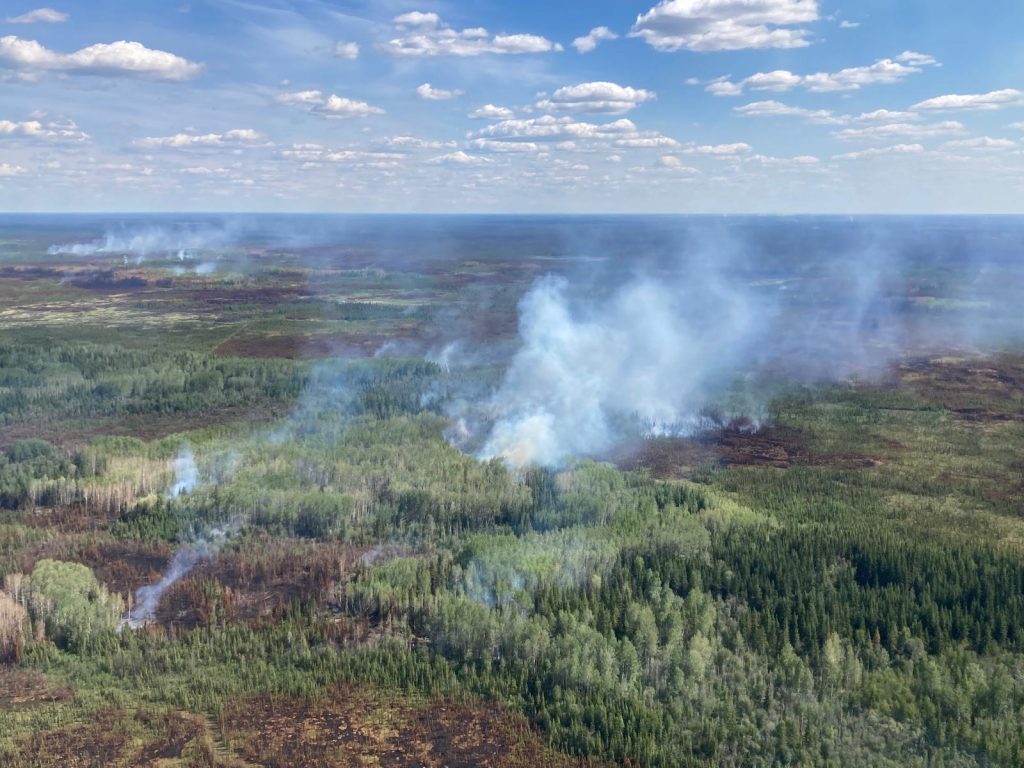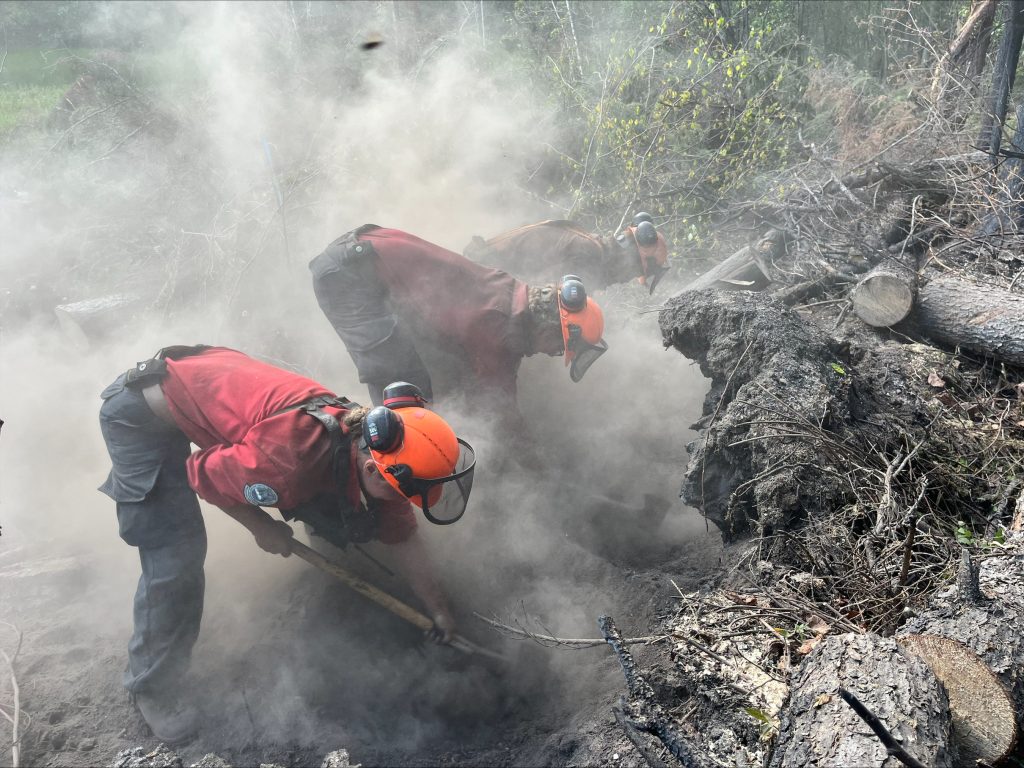Wildfire operations within the Fort Nelson Fire Zone come with additional challenges due to the unique fuel type in the region compounded by multiple years of drought.
Boreal Spruce
The predominant fuel type in the eastern portion of the Fort Nelson Zone is boreal spruce. Spruce trees are coniferous with low lying branches and contain large amounts of sap. In the event of a wildfire, low lying branches act as a ladder, moving fire from the forest floor up into the tree canopy. Additionally, spruce sap is flammable, which favours ignition.
Spruce trees also have shallow roots. Therefore, when the duff layer – the layer between the top ‘litter’ layer and the mineral soil – is burned, tree stability is further compromised.
Acidic, clay-like soil
The soil in northeastern forests is acidic and clay-like. It hosts shallow root systems, such as that of the boreal spruce, and has poor drainage capabilities. Heavy precipitation can affect soil integrity, increasing the risk of falling trees and washing out transportation routes with mud.
Blowdown
Areas where trees have been broken or uprooted create dense, unorganized fuel beds. Excessive blowdown increases the risk of injury from unstable debris. In addition to posing navigation challenges, blowdown increases the volume of fine and large fuels available for a fire to burn.
Cut blocks
Timber harvesting often leaves behind woody debris (slash), which is highly susceptible to ignition. Cut blocks also expose neighbouring stands that would have otherwise been sheltered by the forest canopy, leaving trees more vulnerable to wind and heat.

All these factors combined with multiple years of drought and a wildfire-impacted landscape heightens existing hazards inherent to wildfire response. Identifying and falling unstable trees, known as ‘danger trees’, is one of the ways the BC Wildfire Service mitigates critical hazards.
Several wildfires remain active in the Fort Nelson Zone, most of which are overwintering fires that endured over winter. These wildfires are fueled by compounding years of drought, burning deep within the duff layer. Although fire behaviour responded favourably to recent cool and wet weather, activity has rebounded swiftly under current and forecast hot and dry conditions.

Increased smoke is expected within existing fire perimeters. If you believe you have encountered a new wildfire, unattended campfire or open burning violation, please report it to the BC Wildfire Service by calling 1-800-663-5555 toll-free *5555 from a cellphone or report directly through the BC Wildfire Service mobile app.
Follow the latest wildfire news on:
- X (formerly Twitter)
- YouTube
- The free BCWS mobile app (for Apple and Android devices)
Contact
Fire Information Officer
North Peace Complex
BC Wildfire Service
778-362-4783
BCWS.NorthPeaceComplex.Information@gov.bc.ca
Connect with the Province of B.C. at www.gov.bc.ca/connect.
